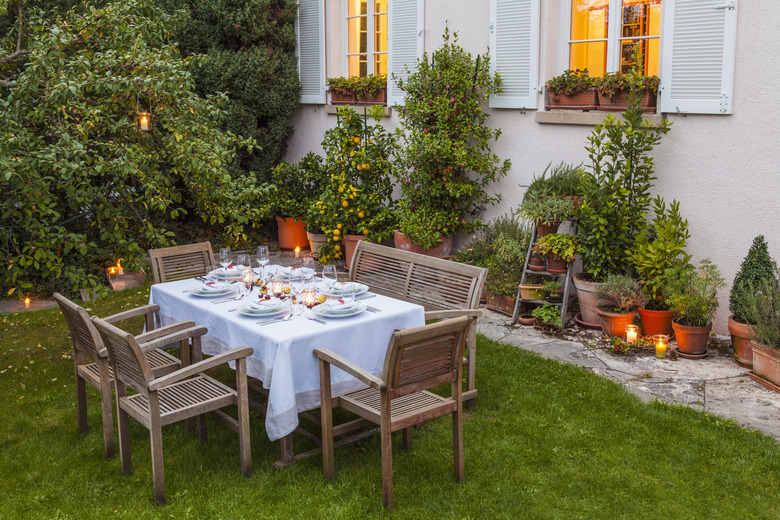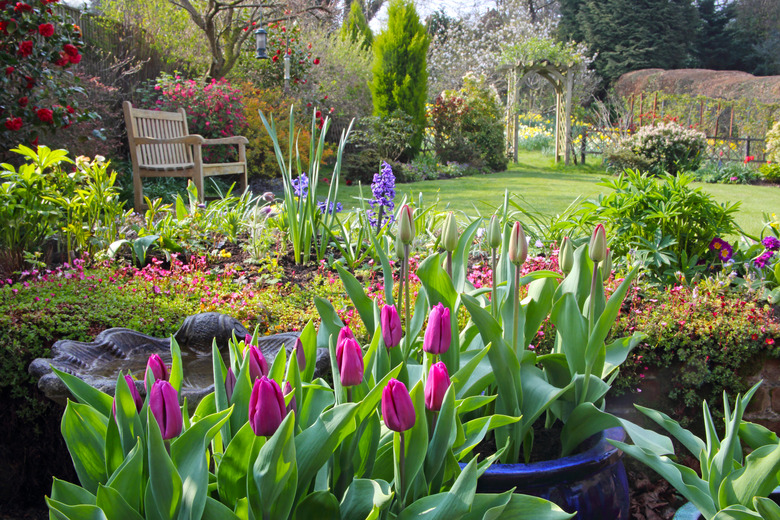4 Time- And Money-Saving Landscaping Tips That Every Homeowner Needs
Instead of just planting random flowers or purchasing ornamental accent pieces for your yard on a whim, a few simple landscaping tips or principles come in handy for plotting a landscape design that's beautiful and functional and that won't cost a fortune. Write down a few landscaping goals before or early into each season to help you stay on track. You don't have to tackle an entire landscape as one overwhelming project; instead, break things down into smaller, more manageable DIY projects that you're more likely to complete.
1. Create Goals and Prioritize
Whether you are dealing with the front yard, backyard, side lots or all of the above, taking notes is one of the most useful landscaping tips to help you determine what works in your yard, what doesn't work and where to begin. Take a look at each area and write down what you like about the current layout, plants and features and what you'd like to change.
Dedicate a page or more to each area so you have plenty of room to write down landscaping ideas as well. For instance, if an old shrub along the side of your backyard has never done well in that shaded location, it could be transplanted elsewhere and replaced with shade-loving plants or even a water feature.
Write down plenty of possibilities in their own section on each page: flowers or other plants you like, flower bed edging styles that may look good in the area or even to cover the entire space with weed barrier, fresh mulch and new flowers. Note any plants or features that need to be removed as well as areas where you already have room to add more features without overcrowding the space.
Once you've covered all the areas on which you would like to work this season, prioritize the projects and areas into smaller, workable chunks. Removing dead plants from a flower bed, for instance, is a good first project because it will free up space for new plants and allow you the chance to assess the health of nearby plants. Write down an ordered list of small projects you'd like to tackle from the pages of notes you made.
Also research specific plants you might purchase to be sure they'll work well in the space you have in mind for them. Note how large the plants may get so you don't inadvertently place a tree with invasive roots too close to the house or place tall flowering shrubs in front of short groundcover plants.
2. Plan for All Seasons
Although your lists tackle projects to handle this season, think of your yard in terms of how it looks in every season. Loads of flowers that bloom in spring look simply stunning, but sooner or later, their blooms fall off, and unless you've chosen flowers that bloom in different seasons, nothing will be in bloom by late summer.
Plan on colors for all seasons with some flowers that bloom in spring and some for later in summer. Plants that have colorful fall foliage are an excellent way to enhance the look of the yard beyond the flowers' final blooms for the year. Some plants, such as ornamental cabbage (Brassica oleracea), add vivid color to a flower bed well into December or even January in cool northern climates long after other plants have gone dormant for the cold-weather months.
Evergreen shrubs don't lose their foliage, so they provide pops of color to the yard all year long, providing great curb appeal. Plant these near the corners of a house or garage to soften the look a bit when viewed from afar. Use two of the same plant in the same size to frame the view symmetrically with one plant at each corner when viewed from the front of the structure. Choose plants that do well in your climate and that thrive in the amount of light each project area receives on any given day.
3. Plan for Walkways and Curved Areas
The larger the property, the more places in the yard that you and your guests are likely to visit. Whether you have a backyard gazebo, a pool or a secret garden hideaway, a natural stone pathway provides a pleasing alternative to a dirt path where grass no longer grows. Set flat slabs of stones in various shapes in a path from your patio or home to the outdoor pool, shed or garden area. For a more elaborate look, dig out some of the topsoil first, arrange the stones as desired and then fill the areas between each with pea gravel or a colorful crushed stone that pairs well with other hues in the surrounding area.
Hard walkways are also ideal for a path from your front door to the sidewalk or from the front yard to backyard in a narrow side lot. Inexpensive landscaping bricks arranged in a decorative fashion and set into the dirt immediately outside a flower bed provide a walkway for weeding. The bricks also serve as a visible border between plant beds and the lawn.
Adding curved areas to the landscape helps break up the boxy look of yard after yard along the average residential street. Create a flower bed with curvy edges in front of the house using flexible landscape edging or a collection of smooth river stones. Rounded flower beds and rock gardens around trees farther out in a yard also look nice.
A natural stone pathway that takes a curved path rather than a straight line also adds a relaxing, peaceful look to your yard. This effect works especially well in a large backyard with a garden or a peaceful area that is a bit far from the home.
4. Always Look for Ways to Save on Landscaping Expenses
Landscaping expenses can get out of hand in a hurry if you spend freely. When purchasing plants, opt for the smaller pots rather than the larger versions to save up to 75 percent. This tactic works especially well with perennials, as the plants typically get larger each year.
Buying perennials also saves more money over time compared to purchasing annuals, according to Money Crashers. Since perennials come back every year, you won't have to buy the same type of plant again if your plant is healthy. Eventually, it may grow large enough that you can thin it and use the cuttings or divided portions in another part of the yard.
A plant that goes to seed may end up with offspring plants nearby as well, again saving you money. Neighbors may also be willing to share some of their bounty as they thin perennials or tear out old landscaping stones. Some neighborhoods have their own social media groups in which people freely give away plants and unneeded landscaping materials.
Wait for sales whenever possible for another way to save money. Big-box home improvement centers often put plants, bird baths, landscaping stones and pavers on sale; if you're set on a specific material, wait a few weeks. Great prices often happen in early spring around Mother's Day and Memorial Day and also Father's Day, July 4 and Labor Day. You may be able to grab those items you've been eyeing for up to 50 percent off the usual retail price or perhaps score an even better deal on end-of-season clearance items.

